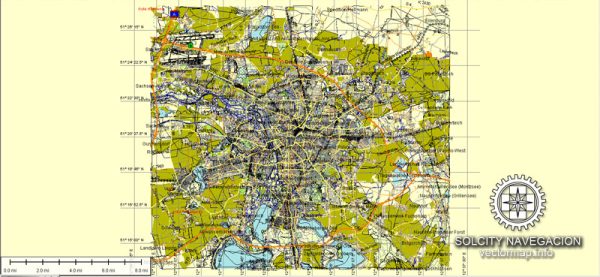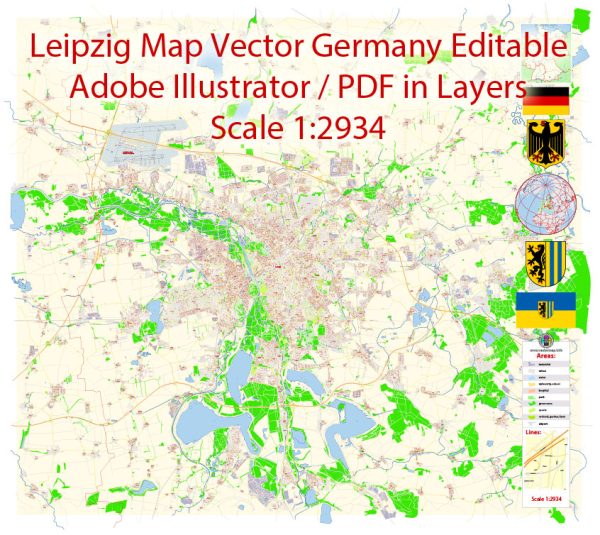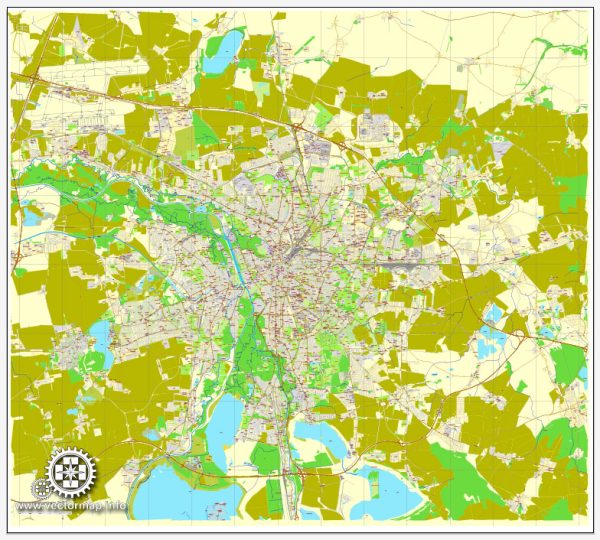Leipzig, located in the eastern part of Germany in the state of Saxony, has a rich history of urban development that spans over a millennium. Here is a brief overview of Leipzig’s history:
Medieval Period: Leipzig’s history dates back to at least the 11th century when it was mentioned in historical records. It grew as a trade hub due to its strategic location at the intersection of major medieval trade routes. The city was granted market privileges in the 12th century, further boosting its economic significance.
Renaissance and Reformation: During the Renaissance, Leipzig became a center for culture and learning. The University of Leipzig, founded in 1409, played a crucial role in this cultural flourishing. The city also became a focal point during the Reformation, hosting the debates between Martin Luther and Johann Eck in 1519.
Trade and Economic Growth: Leipzig’s importance as a trade center continued to grow during the 17th and 18th centuries. The Leipzig Trade Fair, established in the Middle Ages, became one of the most significant commercial events in Europe during this time, attracting merchants and traders from across the continent.
Industrial Revolution: The 19th century brought industrialization to Leipzig. The city expanded with the development of industries such as publishing, textiles, and machinery. The construction of railways further connected Leipzig to major European cities, contributing to its economic prosperity.
Cultural and Artistic Hub: In the late 19th and early 20th centuries, Leipzig gained a reputation as a cultural and artistic hub. The city was home to influential figures such as Johann Sebastian Bach, Richard Wagner, and Felix Mendelssohn. The Gewandhaus Orchestra and the Leipzig Opera House added to the city’s cultural prestige.
World Wars and Division: Leipzig, like many German cities, suffered significant damage during World War II. After the war, the city fell within the territory of East Germany. The division of Germany during the Cold War had a profound impact on Leipzig, as it became part of the communist German Democratic Republic (GDR).
Peaceful Revolution and Reunification: Leipzig gained international attention in 1989 during the Peaceful Revolution, a series of protests that played a crucial role in the fall of the GDR. The Monday Demonstrations in Leipzig were instrumental in the movement toward German reunification.
Post-Reunification and Urban Renewal: After German reunification in 1990, Leipzig faced the challenges of integrating East and West. The city underwent significant urban renewal and redevelopment efforts, revitalizing historic districts and modernizing infrastructure.
Today, Leipzig is a dynamic city that blends its rich history with a vibrant cultural scene, thriving economy, and a commitment to sustainability and innovation. The preservation of its historic architecture and the development of modern amenities make Leipzig a fascinating blend of past and present.




 Author: Kirill Shrayber, Ph.D.
Author: Kirill Shrayber, Ph.D.